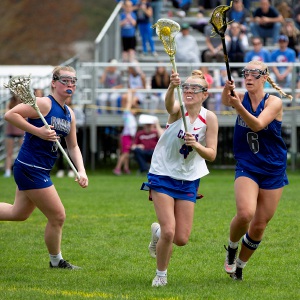Despite objections, Vermont Fish & Wildlife Board moves ahead with new rules for hunting and trapping
| Published: 12-16-2023 2:31 AM |
On Thursday evening, members of the Fish & Wildlife Board voted unanimously to approve new rules for trapping and hunting. Recent laws required the board to create the rules, which were intended to make the activities safer for wildlife, pets and people.
Earlier on Thursday, a group of lawmakers on the Legislative Committee on Administrative Rules (LCAR), which is charged with approving state regulations, voted to formally object to four subsections of the new rules, contending that they didn’t meet all of the obligations of two recently passed laws. Lawmakers had already approved the remainder of the rules at a meeting last month.
The objections, which the body will submit to the Secretary of State’s office to be certified, leave a stain on the rules that could make the Department of Fish & Wildlife vulnerable to lawsuits. And a local wildlife advocacy group has already said it plans to challenge the rules in court.
In Vermont, the Fish & Wildlife Board, made up of citizens appointed by the governor, creates and approves rules for hunting and trapping, while the Fish & Wildlife Department implements and enforces those rules.
The movement to instate stricter regulations on trapping animals and hunting coyotes with dogs has been hugely controversial among wildlife advocates and hunters.
Wildlife advocates have long criticized the Fish & Wildlife Board and its process, calling it uncooperative and resistant to lawmakers who want to tighten hunting and trapping regulations.
Meanwhile, hunters have expressed concern that lawmakers and wildlife advocates are angling to ban the activities altogether.
“Just jumping back to where these bills started, these were bans — ‘There will be no hunting coyote with dogs.’ ‘There will be no more trapping,’ ” Chris Bradley, Vermont Federation of Sportsmen’s Clubs, told VTDigger.
Article continues after...
Yesterday's Most Read Articles
 Dartmouth administration faces fierce criticism over protest arrests
Dartmouth administration faces fierce criticism over protest arrests
 Three vie for two Hanover Selectboard seats
Three vie for two Hanover Selectboard seats
 A Look Back: Upper Valley dining scene changes with the times
A Look Back: Upper Valley dining scene changes with the times
 Norwich author and educator sees schools as a reflection of communities
Norwich author and educator sees schools as a reflection of communities
Act 159, which passed in 2022, required the department to make trapping practices more humane by updating the allowed types of traps, techniques that can be used, locations where traps can be set and ways trapped animals can be killed.
Lawmakers took issue with the final trapping rules for three reasons. In the first instance, lawmakers objected to the addition of the word “hunt” to the definition of trapping, arguing that it could give the activity new protection in the Vermont Constitution, which protects hunting.
In the second instance, lawmakers objected to the board’s definition of a “public trail” near which trapping is restricted. They argued that it should be expanded to “all trails where persons may reasonably be expected to recreate.”
While the rule prohibits traps from being set near trails and public areas, it exempts traps set under water and under ice. In the third instance, lawmakers objected to the exemption, arguing that traps under water could still cause danger to people and pets.
Currently, the act of hunting coyotes with dogs is not regulated in Vermont. Among several requirements, Act 165, which passed in 2022, mandated new regulations that would require hunters to have more control of dogs that pursue coyotes.
The law called for rules that require hunters to reduce the risk that dogs would “enter onto land that is posted against hunting, enter onto land where pursuit of coyote with dogs is not authorized, harass or harm people or domestic animals and cause other unintentional damages to people or property.”
It also created a moratorium on hunting coyotes with dogs until rules are created.
Lawmakers say the new rules don’t guarantee that hunters would have adequate control over their dogs. While hunters will now be required to put electric collars and GPS devices on their dogs and maintain control over the animals, lawmakers were still concerned that the dogs could be too far from their owners to prevent them from running through posted properties and causing damage.
On Thursday morning, lawmakers argued that the moratorium should not be lifted when the rules take effect, which will happen on Jan. 1, because the new regulation falls short of the law’s requirements.
The Fish & Wildlife Board responded to all of LCAR’s objections in a letter arguing that the rules do meet legislative intent.
At Thursday night’s Fish & Wildlife Board meeting, Chris Herrick, commissioner of the Fish & Wildlife Department, said the department is “looking at our legal options with respect to the moratorium,” implying that he would try to lift it despite LCAR’s objection.
“It’s not as cut and dry as some people want to think it is,” he said.
When a state body can’t agree with LCAR on the final details of a rule, the legislative committee can attach a formal objection. The state body can choose to pass the rule despite that objection, as the board voted to do on Thursday evening.
Then, if a relevant person or group objects to the rule and sues, the burden of proof shifts to the state body — in this case, the Vermont Fish & Wildlife Department — which must then defend itself and prove that it has acted within its legal authority while approving the rule. If it is not successful, a court could reverse the regulation.
In this case, the entity bringing a lawsuit could be a wildlife advocacy group, according to Patrick Parenteau, professor of law emeritus at the Vermont Law and Graduate School, who has litigated cases involving wildlife law.
“There is a way for either an individual or an organization representing individuals to challenge these rules,” he said. “There’s hoops that you have to jump through. You have to prove injury, you have to prove a violation of law, et cetera, but there is a way to do it.”
If, for example, a dog is injured or killed in a wildlife trap, a person or group could bring a lawsuit.
If the body submitted a response to LCAR arguing against the objections, the court will weigh that response, and if it’s reasonable, it could help the state’s case. The board’s letter to LCAR outlines such arguments.
Brenna Galdenzi, president of the advocacy group Protect Our Wildlife Vermont, has said the group plans to challenge the rule.

 Young Oxbow baseball team struggles, but coach still finds joy in teaching the game
Young Oxbow baseball team struggles, but coach still finds joy in teaching the game Local Roundup: Hartford tops Woodstock in close girls lacrosse contest
Local Roundup: Hartford tops Woodstock in close girls lacrosse contest Hurricanes earn 10-9 victory over U-32 in girls lacrosse
Hurricanes earn 10-9 victory over U-32 in girls lacrosse Stevens, Newport baseball split high-scoring games
Stevens, Newport baseball split high-scoring games
